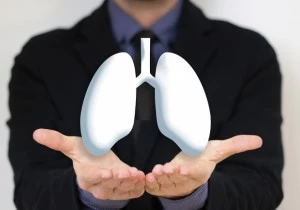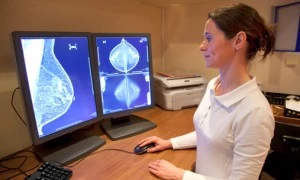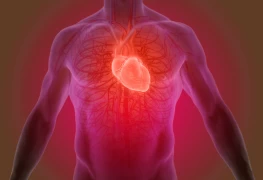Thoracic Outlet Syndrome Evaluation and Management
What is Thoracic Outlet Syndrome?
Thoracic outlet syndrome (TOS) is a term used to describe a group of disorders that occur when there is compression, injury, or irritation of the nerves and/or blood vessels (arteries and veins) in the lower neck and upper chest area. Thoracic outlet syndrome is named for the space (the thoracic outlet) between your lower neck and upper chest where this grouping of nerves and blood vessels is found.
Thoracic outlet syndrome affects people of all ages and gender. The condition is common among athletes who participate in sports that require repetitive motions of the arm and shoulder, such as baseball, swimming, volleyball, and other sports. Neurogenic TOS is the most common form of the disorder (95 percent of people with TOS have this form of the disorder) and generally affects middle-aged women. Recent studies have shown that, in general, TOS is more common in women than men, particularly among those with poor muscular development, poor posture or both.
The disorders caused by TOS are not well understood. Yet, it is known that when the blood vessels and/or nerves in the tight passageway of the thoracic outlet are abnormally compressed, they become irritated and can cause TOS. Thoracic outlet syndrome can be a result of an extra first rib (cervical rib) or an old fracture of the clavicle (collarbone) that reduces the space for the vessels and nerves. Bony and soft tissue abnormalities are among the many other causes of TOS. The following may increase the risk of developing thoracic outlet syndrome:
- Sleep disorders
- Tumors or large lymph nodes in the upper chest or underarm area
- Stress or depression
- Participating in sports that involve repetitive arm or shoulder movement, such as baseball, swimming, golfing, volleyball and others
- Repetitive injuries from carrying heavy shoulder loads
- Injury to the neck or back (whiplash injury)
- Poor posture
- Weightlifting
What are the Symptoms of Thoracic Outlet Syndrome?
The signs and symptoms of TOS include neck, shoulder, and arm pain, numbness or impaired circulation to the affected areas. If left untreated, TOS can cause complications, such as:
- Permanent arm swelling and pain (especially in patients with venous TOS)
- Ischemic ulcer of the fingers (open sore caused by reduced blood flow)
- Gangrene (the death of body tissue, often caused by a loss of blood flow)
- Blood clot
- Pulmonary embolism (obstruction in a blood vessel due to a blood clot)
- Neurogenic complications, such as permanent nerve damage
The pain of TOS is sometimes confused with the pain of angina (chest pain due to an inadequate supply of oxygen to the heart muscle), but the two conditions can be distinguished because the pain of thoracic outlet syndrome does not occur or increase when walking, while the pain of angina usually does. Additionally, the pain of TOS typically increases when raising the affected arm, which does not occur with angina.
Signs and symptoms of TOS help determine the type of disorder a patient has. Thoracic outlet syndrome disorders differ, depending on the part(s) of the body they affect. Thoracic outlet syndrome most commonly affects the nerves, but the condition can also affect the veins and arteries (least common type). In all types of TOS, the thoracic outlet space is narrowed, and there is scar formation around the structures.
Types of thoracic outlet syndrome disorders and related symptoms include:
- Neurogenic thoracic outlet syndrome: This condition is related to abnormalities of bony and soft tissue in the lower neck region (which may include the cervical rib area) that compress and irritate the nerves of the brachial plexus, the complex of nerves that supply motor (movement) and sensory (feeling) function to the arm and hand. Symptoms include weakness or numbness of the hand; decreased size of hand muscles, which usually occurs on one side of the body; and/or pain, tingling, prickling, numbness and weakness of the neck, chest, and arms.
- Venous thoracic outlet syndrome: This condition is caused by damage to the major veins in the lower neck and upper chest. The condition develops suddenly, often after unusual and tiring exercise of the arms. Symptoms include swelling of the hands, fingers and arms, as well as heaviness and weakness of the neck and arms. The veins in the anterior (front) chest wall veins also may appear dilated (swollen).
- Arterial thoracic outlet syndrome: The least common, but most serious, type of TOS is caused by congenital (present at birth) bony abnormalities in the lower neck and upper chest. Symptoms include cold sensitivity in the hands and fingers; numbness, pain or sores of the fingers; and poor blood circulation to the arms, hands and fingers.
How is Thoracic Outlet Syndrome Diagnosed?
Making a proper diagnosis is the most important step in TOS. To diagnose your condition, your vascular and interventional physician will perform a complete physical exam and will review the results of previous diagnostic tests. In some cases, a thorough evaluation by a neurologist may be recommended to rule out cervical spine disease or other neurological conditions that may be mimicking or causing your symptoms. Additional tests performed to diagnose thoracic outlet syndrome include:
- Nerve conduction studies (to evaluate the function of the motor and sensory nerves)
- Injection of muscles in the thoracic outlet with local anesthetics
- Vascular studies (of the arteries or veins)
- Chest X-ray to rule out cervical rib abnormalities
- Cervical spine X-rays to rule out a cervical rib (extra rib) or cervical (neck) spine abnormalities
- Computed tomography (CT) scan and magnetic resonance imaging (MRI) of the chest
- CT scan or MRI of the spine to rule out cervical spine impingement (pressure), which can mimic neurogenic thoracic outlet syndrome
- Magnetic resonance imaging with angiography (MRA) to view blood vessels
- Arteriogram/venogram (X-ray that uses dye to look at blood flow)
- Blood tests
How is Thoracic Outlet Syndrome Treated?
Early identification of TOS can help improve the success of treatment. Thoracic outlet syndrome treatments vary, depending on the type of TOS you have and your symptoms. The goals of treatment are to reduce symptoms and pain. Before choosing any treatment, it is important to talk to your health care provider about the potential benefits, risks and side effects of your treatment options.
- Physical therapy - The most common initial treatment for neurogenic thoracic outlet syndrome is physical therapy. Physical therapy increases the range of motion of the neck and shoulders, strengthens muscles and promotes better posture. Most patients experience an improvement in symptoms after undergoing physical therapy.
- Over-the-Counter Medications - For pain relief, over-the-counter pain medications, such as aspirin, acetaminophen (Tylenol), or ibuprofen (Motrin), may be recommended. Your doctor may prescribe a muscle relaxant for additional pain relief.
- Thrombolytic medications - This type of medication is always given to the patient in the hospital so he/she can be closely monitored. The medication(s) may be injected directly into the vein or delivered via a catheter, a long slender tube, which is guided through the vein to the area where the blood clot is located. The clot-dissolving drug is sent through the catheter into the clot. The clot usually dissolves in a matter of hours to a few days. In some cases, the narrowed area of the vein will need to be treated with angioplasty (opening the vein using a balloon) to keep more clots from forming. Surgery is often recommended after the clot in the vein has been effectively treated/dissolved.
- Anticoagulant medications - Anticoagulant medications include warfarin (Coumadin), heparin, low-molecular weight heparin, fondaparinux (Arixtra) and newer oral anticoagulants decrease the blood’s ability to clot and keep more clots from forming. You will receive information about how to take the anticoagulant medication that is prescribed for you.
- Surgery - In some cases, surgery may be needed to treat neurogenic thoracic outlet syndrome if symptoms continue, despite an optimal course of physical therapy. Surgery corrects the narrowing that is causing problems with the vein and may be recommended after the clot in the vein has been effectively treated/dissolved with medications. Although only 10 to 20 percent of patients with TOS need surgical treatment, most patients with venous or arterial TOS will need surgical treatment.














































































